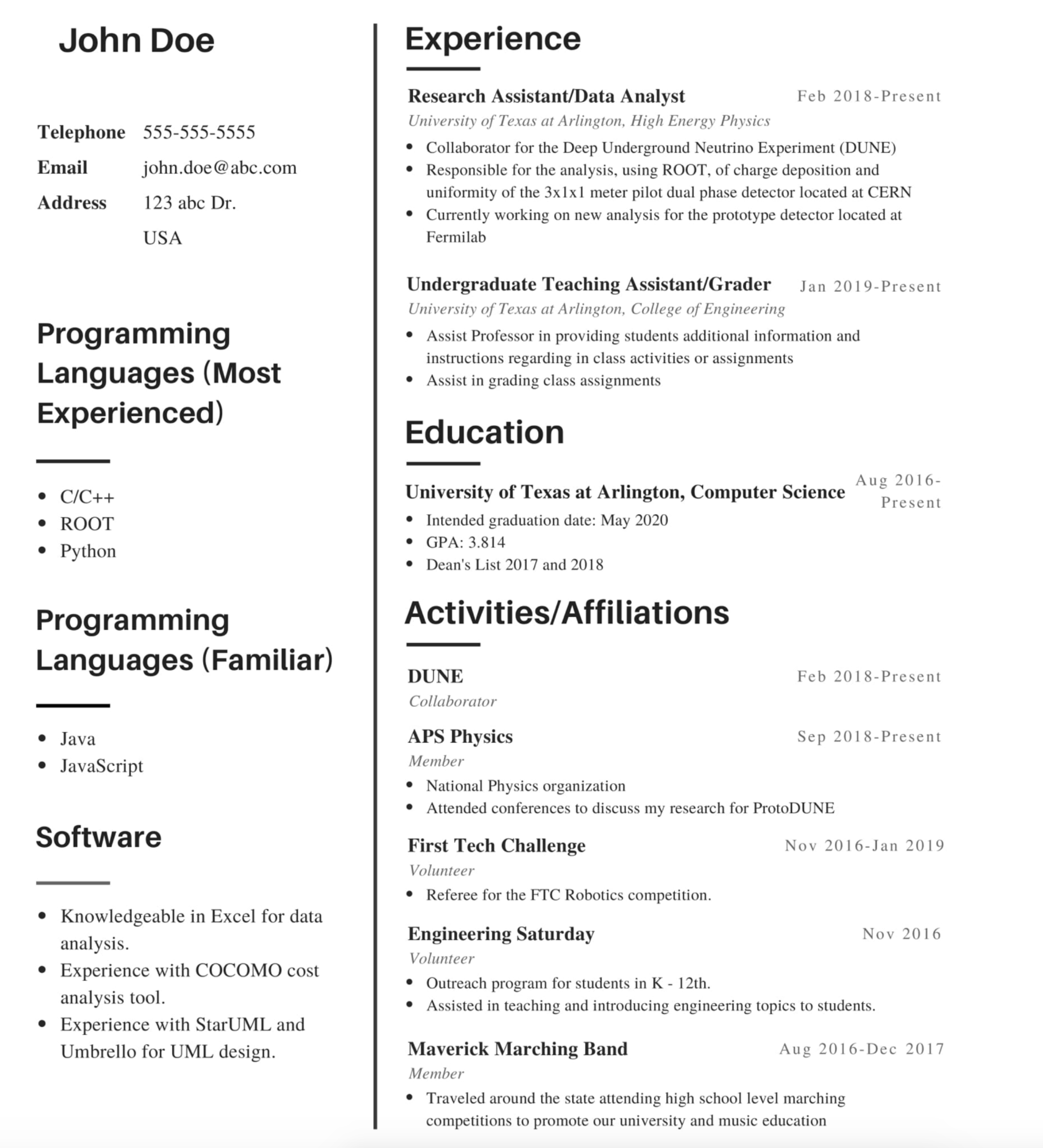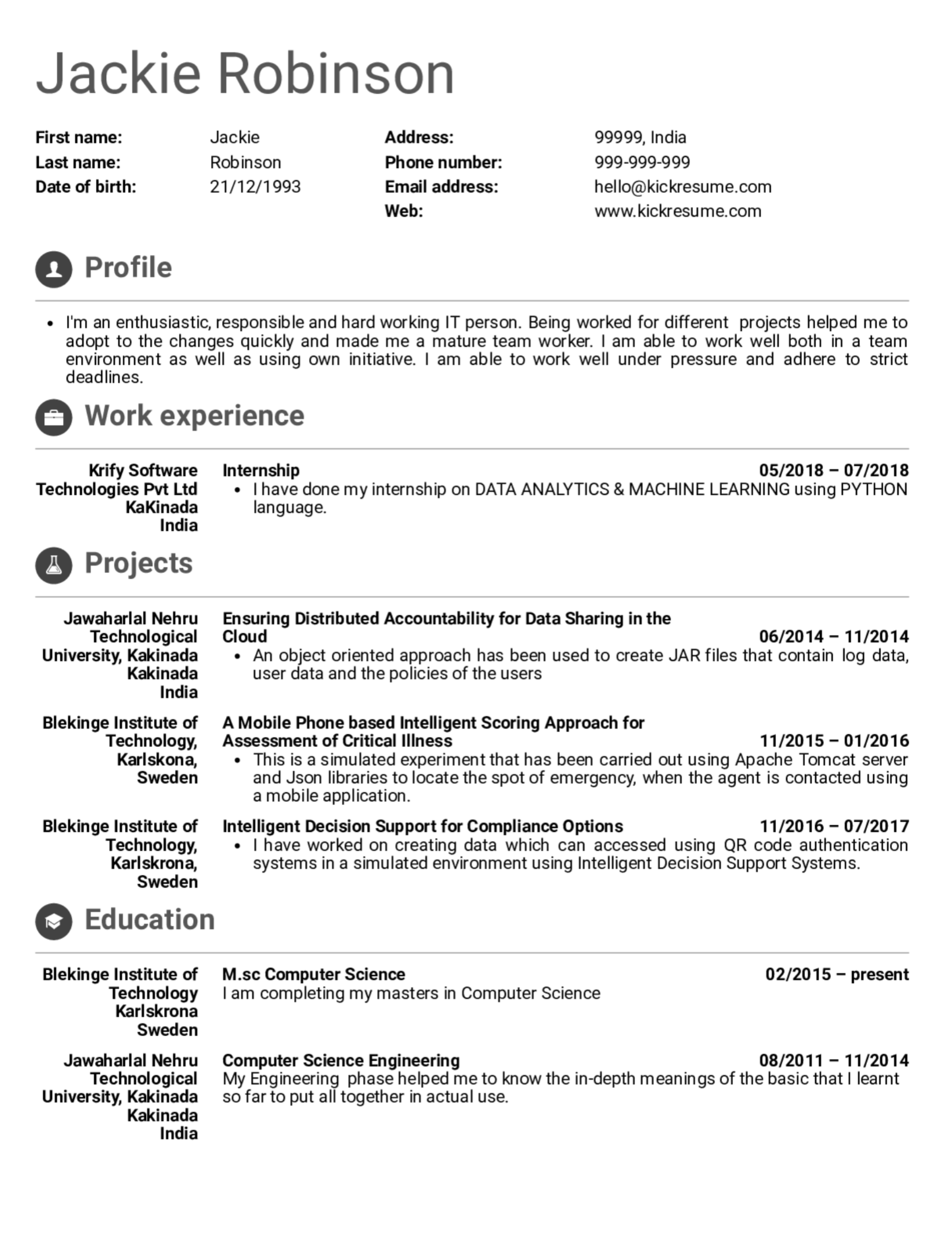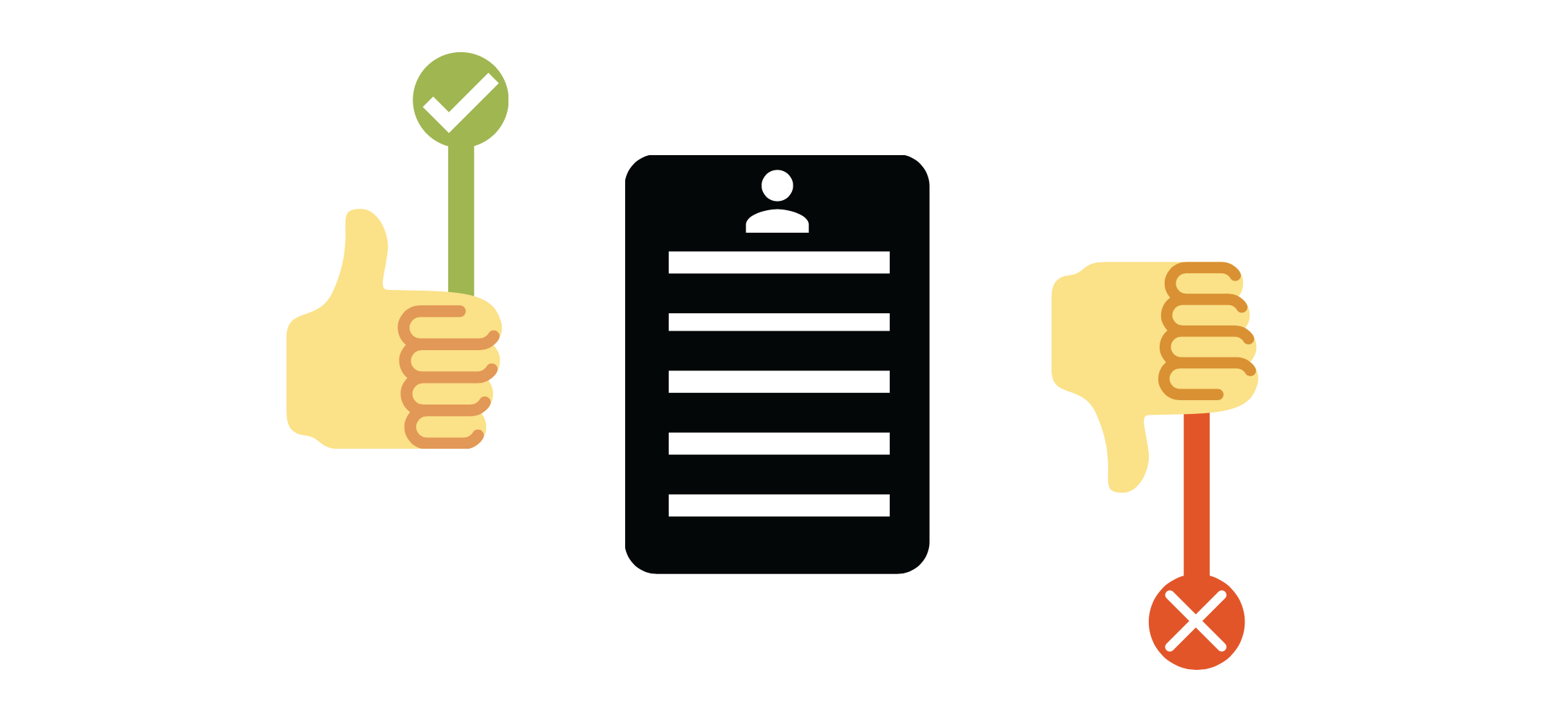Write a Perfect Software Development Resume: tips and examples
CV writing for software engineers is one of the most challenging parts of the job search, even though it is necessary for landing a career. To be a successful candidate, you’ll need a comprehensive resume that highlights your accomplishments.
How you present your coding and cognitive skills to potential employers is just as important as the quality of those skills.
Today, we will walk you through tips to best showcase your unique skills and experiences .
Today, we will go over:
- What do recruiters want to see in a resume?
- How do you structure a resume?
- Tips for constructing a perfect resume
- Wrapping up and resources
Prepare for a behavioral interview.
This course will give you all the tools to thoroughly prepare for behavioral and cultural questions.
What do recruiters want to see in a CV?#
When writing a resume, it’s important to remember who your audience is: recruiters. Recruiters want to reach out to talented candidates. In fact, it’s their job to always be on the lookout for talent.
You need to write your resume with recruiters in mind, making it easer for them to find the information they need.
So, what do recruiters want to see in a CV?
Technical and cognitive skills#
The first thing that recruiters keep an eye on is whether you have relevant skills for the job. So, always try to list relevant job skills on your CV. This includes both cognitive and technical skills, such as soft skills, programming languages, and more.
Don’t assume that a recruiter already a lot about the technical skills you present. Most recruiters don’t have the same background, so they will simply try to match the skills on your CV with those in the job description.
Understanding the bigger picture#
Your resume should also demonstrate your knowledge of the complete software development lifecycle. Most software engineers think that companies are mostly concerned with your understanding of data structures and algorithms, but that’s not entirely true.
Other technical topics including version control, building pipelines, and deployment are also stages in the software development lifecycle.
Open-source contributions#
Recruiters will look for your contributions to open-source projects or known closed-sources projects. These contributions show that you can actually work with the technologies you mention on your CV.
As a software engineer, you should contribute actively to open-source; it helps you understand large codebases, improves your debugging skills, and helps you adhere to best coding practices.
Work ethic and bias for action#
Any employer will be expecting your best work and want to see that you can handle tasks. Having a strong work ethic means you are dependable, respectful, productive and collaborative. More than your skills and achievements, a recruiter will also want to see your work ethic and bias for action.
The best way to demonstrate this on a CV is to use a specific example from your work history, such as describing an achievement where you were trusted by your employer.
You also want to demonstrate commitment to previous jobs, such as times you went above and beyond or any awards you received. If the recruiter is interested, you’ll be given the opportunity to elaborate on that experience during an interview.
How do you structure a resume?#
Now that we know what recruiters want to see on your resume, how do we actually build one? What structure is most effective? There is no golden ticket to structuring a resume. You’ll see a lot of different structures and designs that are successful. The most important thing to remember is simplicity.
You want to include the following sections and keep the organization simple, clean, and to the point. Take a look at these examples, and then we’ll break it down step by step.
Header and summary#
Your resume’s header and summary should include your name, contact information, GitHub portfolio link, LinkedIn profile, and a basic summary of your career goals.
As far as summary is concerned, don’t use a copied one. Instead, make it natural and try to reflect your most important achievements related to the position.
For example, a good summary for a front-end role could be:
“A front-end developer with 3+ years of experience in ReactJS, writer of 3 mini-libraries for developers with 1K+ downloads on NPM, active contributor to open-source tutorials for beginners.”
Education#
Here you should mention your university degree(s). Recruiters prefer if you list the degree with the duration in years and relevant coursework.
For example, if you are applying for the position of software engineer as a fresh graduate, you can highlight some coursework related to data structures and algorithms, programming, scalable, and intelligent systems.
Prepare for interviews the easy way.#
Prepare for interviews without scrubbing through videos or documentation. Educative’s text-based courses are easy to skim and feature live coding environments, making learning quick and efficient.
Projects and open-source#
Projects are the best way to demonstrate experience and skill to a recruiter. Whether someone is a novice or experienced developer, it’s always good to list your best projects in a separate projects section. The things which you need to show in this section include:
- The name of the project
- A one-liner explaining it
- The technology stack used
- 3 or 4 points listing your accomplishments/assignments
A recruiter will care most about the last point. You need to discuss what you did in the project, such as features implemented, key outcomes, results, what you learned, etc.
Professional experience#
A recruiter will pay careful attention to your professional experience. If you have a lot of professional experience, be sure to list them chronologically and use active verbs to highlight your accomplishments. If you are a newbie, you should make your projects section more comprehensive. You can also list internship experiences but focus heavily on what you learned and accomplished.
When discussing your experiences, be it projects, internships, or former jobs, always follow the Accomplishment-Measurement-Action pattern. In other words, list the accomplishment, use numeric metrics, and describe specific actions you took.
For example:
“Successfully reduced the loading time of a web application by 20% by removing unused modules and loading specific modules.”
Technologies#
As we already discussed, you should focus on the most relevant technologies in this section by listing them first. For example, if you are applying for a front-end role, list related front-end frameworks and languages, such as JavaScript, ES6, ReactJS, Angular, Vue, Webpack, and Gulp.
You can include technologies not directly related to the position, but put these at the end of the list.
Certificates and awards#
If you have received certificates and awards, you should include them on your resume near the end. But don’t make mistake of just listing down the name of the certificate with the date they completed it. A better approach is to list the things you learned while completing a course or certificate.
The same goes for awards; include them in your resume, but support them with a brief description of why you got the award. Giving some context makes your awards more valuable to a recruiter.
Tips for constructing a perfect resume#
Now that we know what recruiters want to see and how we can best structure a resume, let’s discuss a few tips from industry experts that will make your resume stand out most.
-
Only show relevant job experiences in your resume. For example, if you have experience working as an assistant in a hotel, then don’t include it unless certain skills or accomplishments can be tailored to the software development job.
-
Customize your CV according to the job description. Try to include the keywords from the job description. This will also help your chances if a company uses a resume scanner. This will also demonstrate your dedication to the role, that you took the time to read it and meet their needs. Try to avoid using too much jargon, however. You should also re-read the job description and incorporate as many requirements as possible as part of your skillset.
-
Focus on problem solving. If you’re coming from a non-coding background, highlight the skills related to problem solving or analyzing data. Find the overlap and bring it out in the descriptions.
-
Pay attention to grammar and details. Don’t forget about the details. Grammar and style are important. Recruiters only spend a few moments reading a resume, so any grammatical errors can drastically limit your chances of progressing to an interview. Proofread and spell-check multiple times, and pay attention to word choice to confirm that the verb tenses are consistent. Have a friend, former employer, or editor do a once-over to find any glaring errors.
-
Check formatting. Make sure that your resume file will show up properly on any device. Send someone your resume to ensure that it shows up on their computer in the same format as yours. PDFs are a safe bet since the format can’t be altered.
-
Keep the design simple. Only developers looking to transition to a more creative career should use fancy fonts or colors. Otherwise, the design can be simple and straightforward. Use black ink to ensure that all the text will show up on a screen.
Wrap up and resources#
Writing a CV does not have to be a difficult. You don’t need to be a good writer. You just need to focus on your skills and accomplishments in a way that highlights the value you already bring to the table! When it comes to interviews, it’s often not your technical competency that holds you back from landing your dream job, it’s how you perform on the behavioral interview.
So, if you’re looking to prepare for an interview, Educative’s course Grokking the Behavioral Interview is the best way to go. You’ll be able to use Educative’s new video recording widget to record yourself answering questions and assess your performance. By the time you’ve completed the course, you’ll be able to answer any behavioral question with confidence.
Happy learning!
Keep reading about interview preparation#
Free Resources



